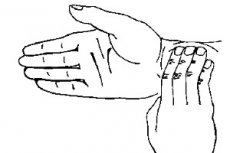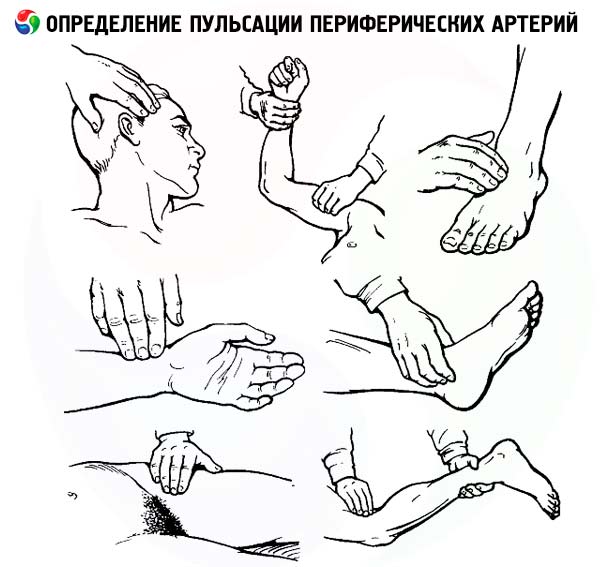
All iLive content is medically reviewed or fact checked to ensure as much factual accuracy as possible.
We have strict sourcing guidelines and only link to reputable media sites, academic research institutions and, whenever possible, medically peer reviewed studies. Note that the numbers in parentheses ([1], [2], etc.) are clickable links to these studies.
If you feel that any of our content is inaccurate, out-of-date, or otherwise questionable, please select it and press Ctrl + Enter.
Arterial study
Medical expert of the article
Last reviewed: 06.07.2025

Arterial examination reveals signs of partial occlusion due to atherosclerosis or embolism. Peripheral arterial circulation disorders are usually more severe in old age due to deterioration of collateral blood flow.
Interview, collection of anamnesis
Intermittent claudication can be revealed, which is the first symptom of chronic arterial insufficiency of the legs. The patient notes the appearance of pain or cramps in the calves while walking, which pass at rest. A gradual decrease in the length of the path that the patient can walk without pain reflects the progression of the disease. These disorders occur when the femoral or internal iliac arteries are affected. Pain can also occur at rest, if the process is particularly advanced. In this case, the patient is forced to lower the leg: in this position, blood circulation conditions improve, perfusion increases, although some increase in venous pressure can cause local edema.
Inspection
During examination, signs of arterial insufficiency can be detected. In its acute development, the limb becomes cold, pale, and later cyanotic. Gangrene may develop, requiring surgical observation. Long-term ischemia leads to impaired sensitivity and trophic disorders; impaired growth of nails, hair, atrophy, thinning of the skin and subcutaneous fat. Changes in the appearance of the limb are characteristic when changing its position: when raised up, it becomes pale, cyanotic, when lowered down, reactive hyperemia with a purple-cyanotic skin color occurs.
Raynaud's disease often occurs in young women and is a consequence of insufficient arterial blood supply to the fingers. Such patients report increased sensitivity to cold, cold water, whitening and numbness of the fingers (primarily IV and V) as a result of spasm of the arteries and transient disruption of the arterial blood supply to the tissues. Upon examination, the fingers become white, cold to the touch, and insensitive. This is followed by cyanosis and painful reddening of the fingers as a result of increased blood flow due to the restoration of arterial patency. Similar blood flow disorders associated with damage to small arteries of the extremities are often encountered in inflammatory lesions of connective tissue, for example, in systemic scleroderma and systemic lupus erythematosus.
Visible pulsation of arteries, for example, carotid arteries, is detected in case of aortic valve insufficiency, and sometimes in case of pronounced sclerotic changes of this vessel in elderly women.
If peripheral circulatory insufficiency is suspected, detailed palpation of the vessels is advisable, on both sides. The posterior tibial artery is palpated behind the medial condyle; the dorsal artery of the foot is palpated near the tendon that goes to the big toe. In intermittent claudication and other manifestations of insufficient blood supply to the legs, the pulsation of these arteries may be sharply weakened or even absent. When palpating an ischemic limb, in particular in the acute development of ischemia, accompanied by pain and impaired pulsation, attention is paid to a decrease in skin temperature, especially in the distal parts.

Auscultation of vessels is performed at points corresponding to their projection on the body surface. The appearance of systolic murmur is very typical for the development of arterial stenosis; with complete occlusion of the vessel, the murmur may disappear. Systolic murmurs are most often noted over the carotid arteries. Of great practical importance is the detection of murmurs over the renal arteries, which may indicate their stenosis (the cause of arterial hypertension).


 [
[